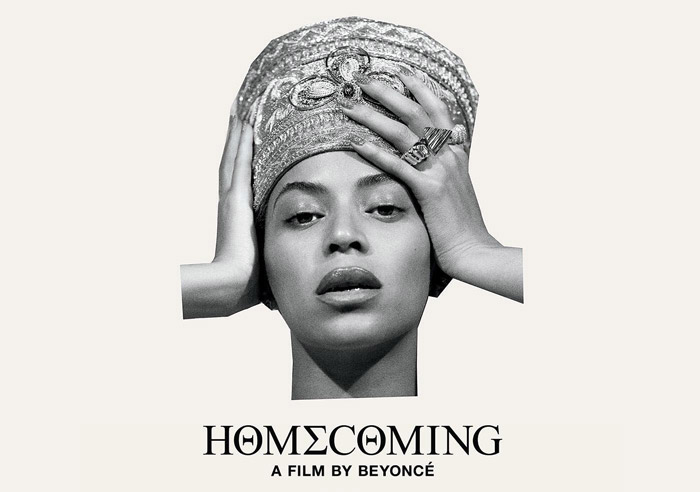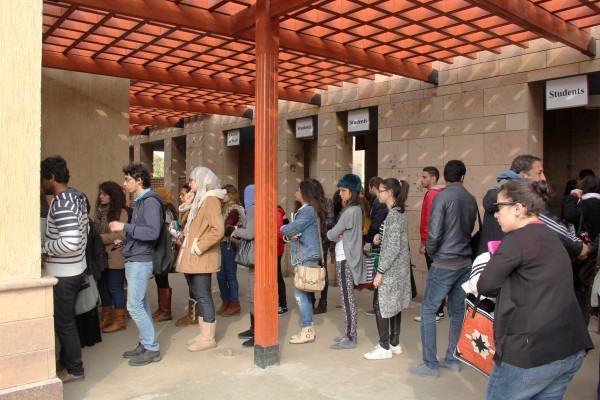Homecoming: An Ode to the Power of African-American Youth
By: Nadine Fahmy
Managing English Editor
@nadinefahmy
On April 19, Netflix released documentary and concert film Homecoming, offering raw and intimate glimpses into the making of Beyonce’s famous Coachella performance in April 2018, led by both Beyonce and over 200 youth onstage.
As the first African-American woman and singer to ever headline the annual California-held Coachella Valley Music and Arts Festival, Beyonce gave the performance her all, and a year later, she released a film chronicling the preparations for that moment, which she has written, directed and produced.
In celebration of Beyonce’s “homecoming” post-partum on stage, the film is also steeped in the culture of Historically Black Colleges and Universities (HBCUs) of the United States, where Homecoming is a treasured and significant annual tradition of the coming-together of alumni and students.
According to the National Museum of African American History and Culture, an HBCU is “any historically black college or university that was established prior to 1965, whose principal mission was, and is, the education of black Americans.”
These schools, as highlighted in the film, provide a platform where African-American youth can express themselves freely and where they retain many rights that they have been denied over the centuries, including education.
Moreover, these institutions play a significant role in US history, having been home to the likes of William Du Bois, a famous American civil rights activist, and American activist and Minister Martin Luther King, Jr., whose famous speech delivered in 1964, “I Have a Dream,” became vital to the history of Black intellectual thought.
While Beyonce herself had not attended one of these colleges, her father had, and in a concluding remark before the credits of the film, she writes, “‘So many people who are culturally aware and intellectually sound are graduates of HBCUs, including my father. There is something incredibly important about the HBCU experience that must be celebrated and protected.”
The film included various pieces of archival footage of events and football games from HBCUs such as Jackson State University and Alabama State University – with these references recurring throughout the film, Beyonce expresses her admiration for the HBCU culture and the youth at the heart of it.
This spirit of the college life in HBCUs and the power and talent of youth nurtured there is also the prevalent motif of Beyonce’s headlining Coachella performance of 2018.
Beyonce explained in the film that her priority for this performance was to provide a platform where black culture is expressed and celebrated, and where, in her words, “everyone that had never seen themselves represented felt like they were on that stage with us.”
She did so through a theme of HBCU culture expressed through the set and props used onstage, including her and her crew’s outfits, a yellow hoodie with large Greek letters, a reference to the sorority and fraternity houses of HBCUs.
With this statement, she expresses the life-long loyalty and significance of HBCU college culture which far exceeds the four years of university for its students.
She also used bleachers and marching bands as the stage setting of the two-hour-long performance, on which stood around 200 musicians and dancers.
In the film, Beyonce paid tribute to these performers, saying: “The amount of swag is just limitless, like… the things that these young people can do with their bodies and the music they can play and the drum rolls and the haircuts and the bodies.”
This was not her only tribute to youth in the film; in fact, the film, chronicling the months preceding the Coachella performance, often focused on bus rides and hangouts of the performers as they trained, which all resembled the mundane days of college life.
“It’s been a family environment. I love it. I don’t even want to go home after it’s over with,” one young man said.
Beyonce recreated the college experience and the power and joy of being young onstage at Coachella, with theatrics unconventional to the Coachella stage—the performance even included short comedy bits acted out by Beyonce and several male performers.
With all of these different modes of expression celebrated in the performance and the film, Beyonce successfully managed to “lift every voice and sing,” a song that she sang, which she refers to in the film as the “black national anthem.”
Not only were the performers elevated, but the audience themselves, shown in the many clips of the Coachella performance as they sang along to every song, screaming, shouting and raising their banners high, were celebrating music, culture, noise and expression.
It was youth celebrating youth, celebrating life, and the excellence of black culture.
As the film interwove those clips with Beyonce’s personal journey with her family, and with speeches and quotes from famous black civil rights activists, such as Martin Luther King Jr. and Malcolm X, and poets such as Audre Lorde and Maya Angelou, it embraced solidarity and love across generations.
It showed, brilliantly and poetically, the way black culture and legacy continues to live on and is carried now by the youth of today.
The elaborate Coachella performance values difference and the beauty of that difference as it comes together in one big expressive movement, and that is what the performance and the film are part of: a cultural movement.
It beautifully integrates all of its different parts—Beyonce’s journey through pregnancy and motherhood, the brilliance of the Coachella performance itself, the difficult moments of training and the boundaries pushed by the youth in the project—to create a much more powerful whole, a metaphor for the power of the collective.
Beyonce strove to give voice to that power in her performance as she gathered a marching band, dancers, back-up singers, trumpet players and herself in an awe-inspiring expression of the black experience, which she later translated on screen through her vibrant and impactful film.
Far from being a self-absorbed biopic centered on Beyonce, the film is about unity, across generations and across genders. It is about the magic that happens when a group of different people with different talents come together as a collective – the magic of family.



